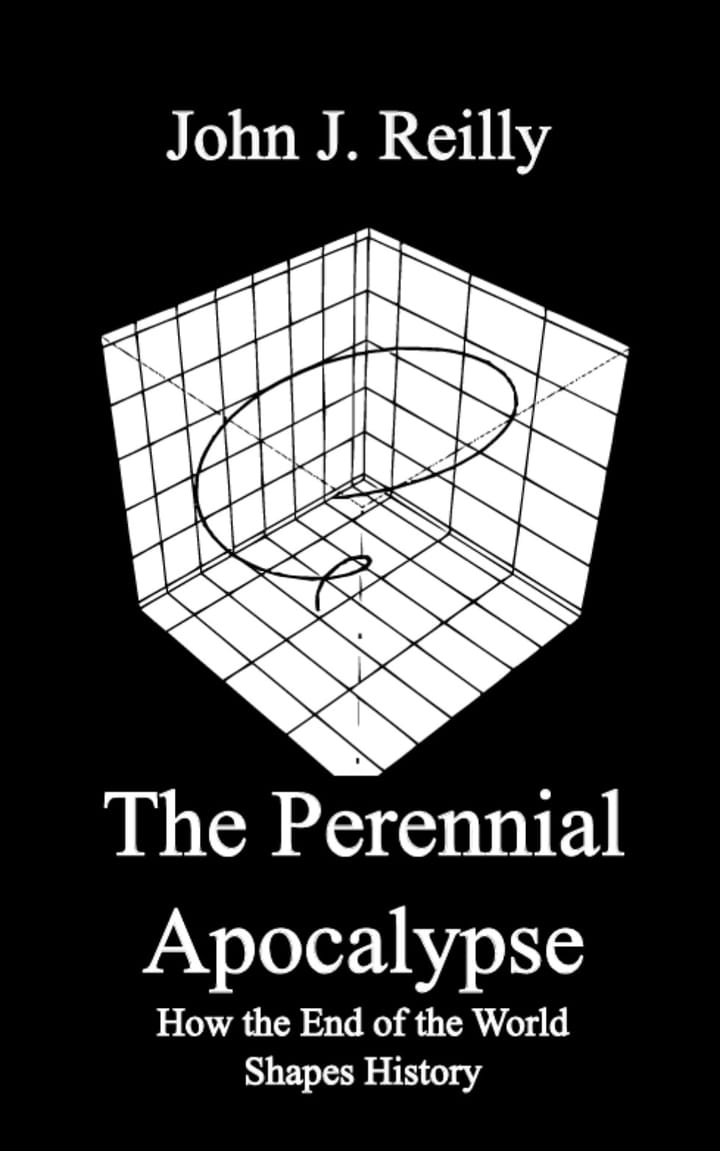The Long View 2008-11-17: Another Reason to Dislike the Matrix

John J. Reilly recounts an one of the periodic corruptions that seemed to occur on his bulletin board. It may or may not have been this time, I know that once I had encouraged him to enable a CAPTCHA feature on his bulletin board that completely borked it.
There is also this fine paragraph on myth and history:
We have now entered the country of How Napoleon Never Existed. I'm sorry, this kind of argument just does not work. Abraham Lincoln really was assassinated on Good Friday. Apollo XIII really was the unlucky one. Events remain in the popular memory in part because they incarnate archetypical patterns. Myths are mnemonics.
Another Reason to Dislike The Matrix
Readers will recall that the ill-fated Matrix trilogy was a Gnostic allegory with apocalyptic elements. The demiurge of that world was an operating system that, for religious reasons, assumed the form of a fast-food chicken entrepreneur. He explained to Neo the Hero that he was actually living in the fifth world-construct; the each previous one had collapsed in turn, destroyed through subversion by the enlightened or through their own implausibility.
That, frankly, seems to be my problem with these PHP bulletin boards. My first one was destroyed by my attempt to upgrade it. The most recent one became corrupted over the last weekend and I determined that the data could not be restored. So, I invoked a backup, but I found I did not have anything more recent to restore than an early version of the current board. I thought the backup of the most recent version was automatic. Apparently not.
Anyway, let me now reiterate my appreciation for the long-suffering interest of the board members and for the high quality of their posts. The board has returned, and I will exert myself hereafter to make manual backups. However, it seems I must caution users to make backups of their own.
The lifespan of one of these boards seems to be about 18 months. Does everyone have this problem?
* * *
Speaking of Gnostic allegories, that Spengler at Asia Times has embraced one in the hope that Scandal exposes Islam's weakness. Spengler gives sober attention to a critical appraisal of early Islamic history by one Muhammad Sven Kalisch, a German convert to Islam who teaches Muslim theology at the University of Munster. Professor Kalisch favors a perennialist interpretation of Islam. In this he is not alone. All perennialists, perhaps, must believe that history is a secondary matter, because the important issue is the timeless transcendent to which all historical revelation points. Still, but he is somewhat unusual in applying the historical-critical method to Islam. The Christian "Higher Critics" claimed to have "made room for the Christ of faith" by debunking the historicity of the Gospels (using, it must be added, techniques that are peculiar to the Higher Criticism and which have rarely proven reliable when new archeological information has come to light). The professor at Munster has demonstrated, at least to his own satisfaction, that the Prophet Mohammed may never have existed, and that it would not be important if he had. Islam, in this interpretation, was a verb without an identifiable noun.
The imam of Munster makes a familiar argument: the fact that an allegedly historical event enacts a mythological pattern is evidence that the event is a narrative construct rather than a recollection of history. Spengler offers us this example:
"No prophet is mentioned in the Koran as often as Moses, and Muslim tradition always emphasized the great similarly between Moses and Mohammed," he writes. "The central event in the life of Moses, though, is the Exodus of the oppressed Children of Israel out of Egypt, and the central event in the life of Mohammed is the Exodus of his oppressed congregation out of Mecca to Medina ... The suspicion is great that the Hegira appears only for this reason in the story of the Prophet, because his image should emulate the image of Moses." Furthermore, "the image of Jesus is also seen as a new Moses. The connection of Mohammed to the figure of Jesus is presented in Islamic tradition through his daughter Fatima, who is identified with Maria ... The Line Fatima-Maria-Isis is well known to research. With the takeover of Mecca, Mohammed at least returns to his point of origin. Thus we have a circular structure typical of myth, in which beginning and end are identical. This Gnostic circular structure represents the concept that the soul returns to its origin. It is separated from its origin, and must return to it for the sake of its salvation."
We have now entered the country of How Napoleon Never Existed. I'm sorry, this kind of argument just does not work. Abraham Lincoln really was assassinated on Good Friday. Apollo XIII really was the unlucky one. Events remain in the popular memory in part because they incarnate archetypical patterns. Myths are mnemonics.
Copyright © 2008 by John J. Reilly



Comments ()